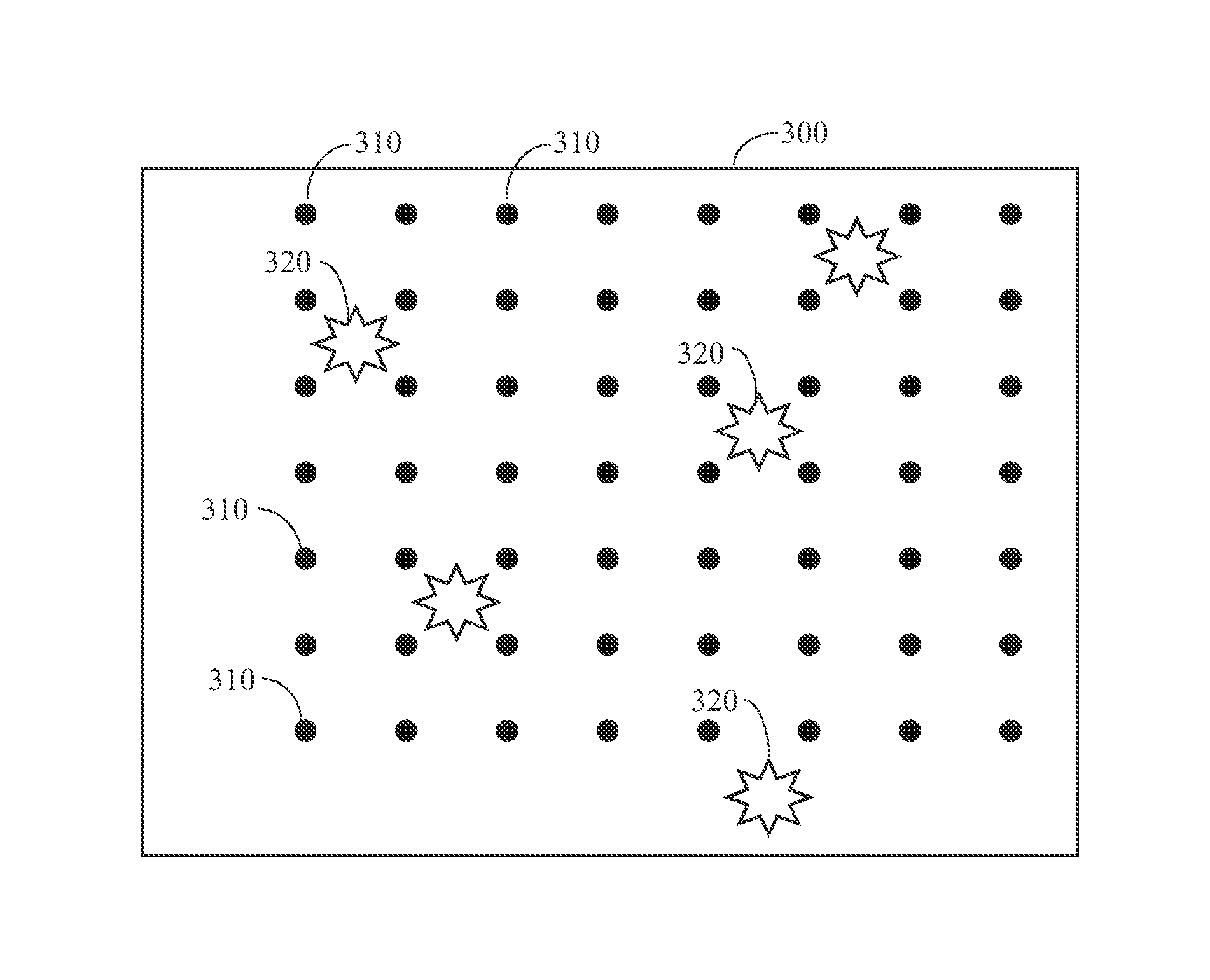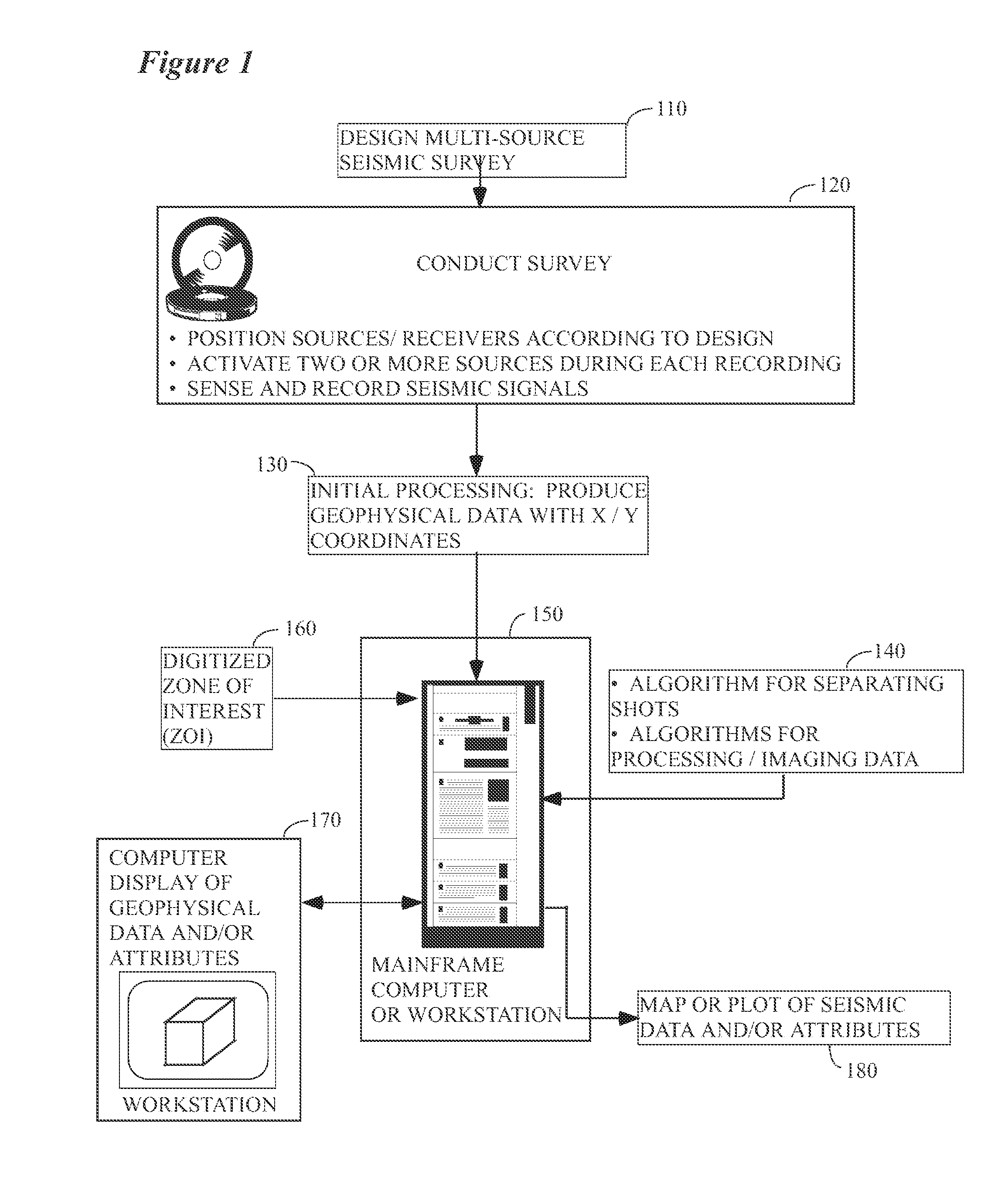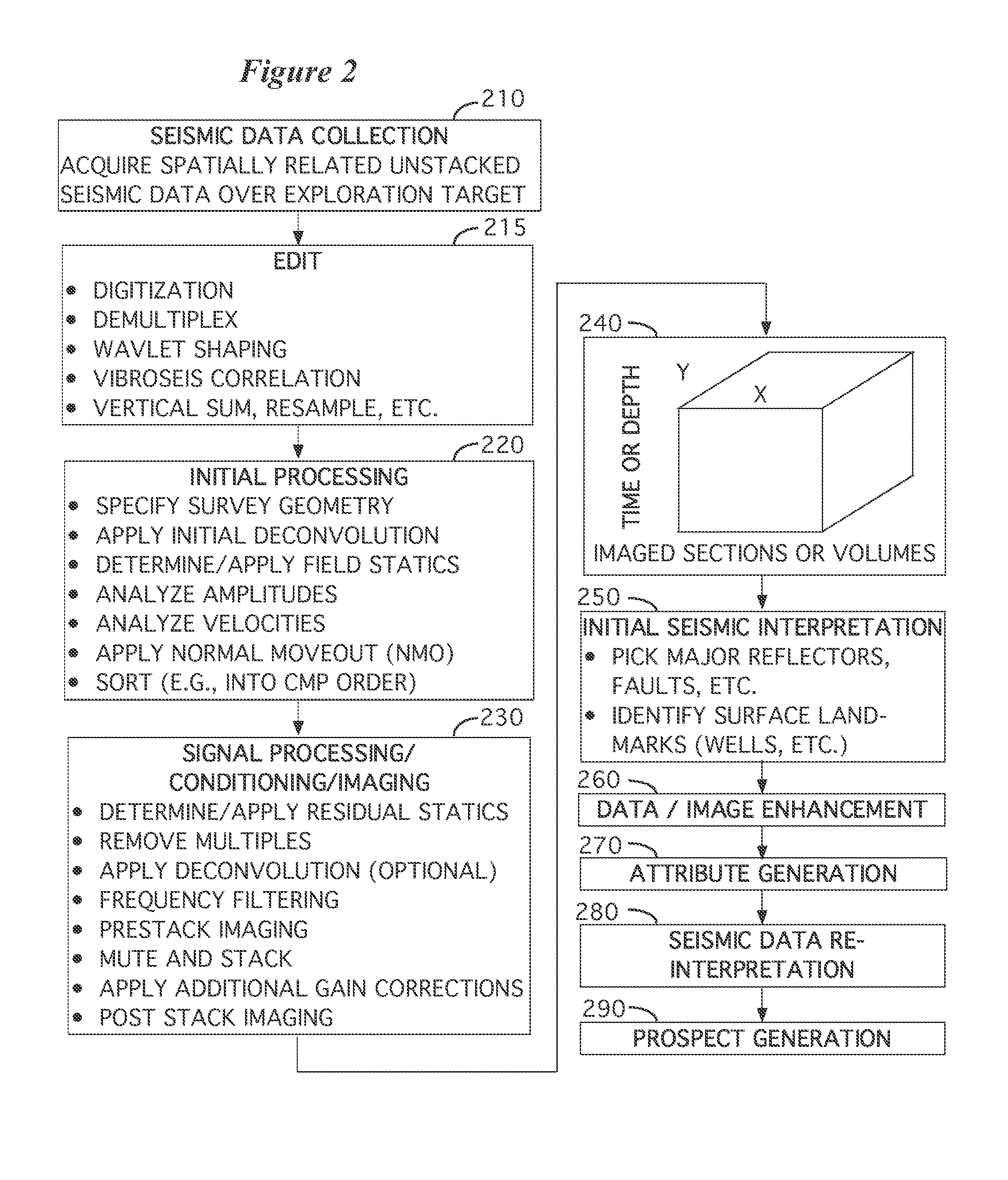Method for separating independent simultaneous sources
a simultaneous source and independent technology, applied in the field of seismic exploration, can solve the problems of reducing the time in the field, affecting the economics of the survey, and being relatively expensive to acquire, and achieve the effect of faster acquisition
- Summary
- Abstract
- Description
- Claims
- Application Information
AI Technical Summary
Benefits of technology
Problems solved by technology
Method used
Image
Examples
Embodiment Construction
[0034]While this invention is susceptible of embodiment in many different forms, there is shown in the drawings, and will herein be described hereinafter in detail, some specific embodiments of the instant invention. It should be understood, however, that the present disclosure is to be considered an exemplification of the principles of the invention and is not intended to limit the invention to the specific embodiments or algorithms so described.
General Environment of the Invention
[0035]FIG. 1 illustrates the general environment in which the instant invention would typically be used. A seismic survey is designed 110 by the explorationist to cover an area of economic interest. Field acquisition parameters (e.g., shot spacing, line spacing, fold, etc.) are typically selected in conjunction with this step, although it is common to modify the ideal design parameters slightly (or substantially) in the field to accommodate the realities of conducting the survey.
[0036]Seismic data (i.e., ...
PUM
 Login to View More
Login to View More Abstract
Description
Claims
Application Information
 Login to View More
Login to View More - R&D
- Intellectual Property
- Life Sciences
- Materials
- Tech Scout
- Unparalleled Data Quality
- Higher Quality Content
- 60% Fewer Hallucinations
Browse by: Latest US Patents, China's latest patents, Technical Efficacy Thesaurus, Application Domain, Technology Topic, Popular Technical Reports.
© 2025 PatSnap. All rights reserved.Legal|Privacy policy|Modern Slavery Act Transparency Statement|Sitemap|About US| Contact US: help@patsnap.com



